Do you have a question about the Yaesu ADMS-16 and is the answer not in the manual?
Details symbols and conventions used for important information in the manual.
Contains crucial information regarding software copyrights, usage restrictions, and liability.
Lists registered trademarks relevant to the ADMS-16 software and its compatibility.
Lists compatible Microsoft Windows operating systems required for the software.
Specifies that the CPU must meet the minimum requirements of the operating system.
States that system memory capacity must be sufficient for the operating system.
HDD capacity must be sufficient for OS and software; approx. 50 MB additional is needed.
Requires a commercially available microSD memory card for data transfer operations.
Details the necessary PC connection cables, such as SCU-56/SCU-20 and CT-163.
Specifies the need for a microSD card reader if not using specific connection cables.
Lists required PC interfaces like USB (1.1/2.0) or RS-232C (COM port).
Instructions to download the ADMS-16 programming software from the Yaesu website.
Step-by-step guide for installing the ADMS-16 software using the setup executable.
Provides instructions on how to manually uninstall the ADMS-16 software from the system.
Instructions on how to launch the ADMS-16 software by double-clicking its desktop icon.
Emphasizes the necessity of reading transceiver data before editing with ADMS-16.
Details the process of saving transceiver data to microSD and importing it into ADMS-16.
Explains how to obtain transceiver data using a connection cable for ADMS-16.
Illustrates the initial screen presented upon launching the ADMS-16 software.
Explains how to use the Menu Bar for settings import/export and data transfer operations.
Describes using the TAB Menu Bar to access memory channels, VFO, and other settings.
Explains accessing and using the Set Mode window for customizing transceiver functions.
Step-by-step guide to import settings data from a microSD card into ADMS-16.
Details the organization of data files and folders on the microSD card for the transceiver.
Instructions for transferring ADMS-16 data from the PC to a microSD memory card.
Guides on setting up the correct COM port for PC communication with the transceiver.
Process for transferring transceiver settings data to the ADMS-16 PC programmer.
Process for downloading ADMS-16 data from the computer to the transceiver.
Overview of File menu actions: New, Open, Close, Save, Save As, Import, Export, Print, Exit.
Saves the current configuration file with a new name and destination folder.
Details importing data from CSV files, including VFO and memory templates.
Explains exporting data into CSV format for use with other software or versions.
Describes importing data files compatible with FTM-100D/400D models.
Explains exporting data files compatible with FTM-100D/400D models.
Details importing data files compatible with FT1D/FT2D models.
Explains exporting data files compatible with FT1D/FT2D models.
Describes importing data files compatible with FT3D/FT5D models.
Explains exporting data files compatible with FT3D/FT5D models.
Provides instructions on printing the current template file data.
Instructions on how to exit the ADMS-16 software, including save confirmation.
Reverts the last data editing action performed.
Removes selected data and copies it to the clipboard.
Copies selected data to the clipboard without removing it.
Inserts data from the clipboard into the selected area.
Searches for specific text within a selected column in the data.
Locates the next instance of the previously searched text.
Allows direct navigation to a specified channel number.
Adds a new blank channel row at the current cursor position.
Removes a specified range of channel data from the list.
Clears current channel data, leaving blank rows.
Moves the current channel data row one position upwards.
Moves the current channel data row one position downwards.
Creates new memory channels based on a starting frequency and step.
Sorts memory channels based on selected criteria like frequency or name.
Customizes transceiver functions through an easy-to-use interface via the Set Mode window.
Controls the display or hiding of the Toolbar for quick access to functions.
Displays action descriptions, toolbar status, and keyboard latch state.
Manages the display of multiple template files using Tile or Cascade options.
Details how to enter and edit frequencies for up to 999 memory channels.
Explains editing upper and lower limit frequencies for PMS operations.
Setting the desired receive and transmit frequencies for a memory channel.
Defining the frequency difference used for offset operations.
Specifying the direction (+ or -) of the frequency offset.
Selecting the operating mode (FM or AM) for the channel.
Choosing between digital (AMS, V/D, Voice FR) and analog modes.
Assigning a descriptive name (up to 16 digits) to a memory channel.
Selecting the Audio Squelch Code type.
Setting the Tone Frequency for Tone Squelch.
Selecting the Digital Code Squelch (DCS) code.
Setting idle line frequency for signal removal in specific radio systems.
Specifies the receiving DG-ID number.
Specifies the transmitting DG-ID number.
Sets the transmitter power level.
Configures the channel step for receiving channels.
Enables Narrow FM mode for reduced bandwidth.
Adjusts microcomputer clock settings to improve spurious signal issues.
Adds descriptive comments to memory channels (not transferred to transceiver).
Enter VFO frequencies for each band; default frequencies are pre-entered.
Transmit frequency is automatically set based on receive and offset frequencies.
Defines the frequency difference used for offset operations for VFOs.
Specifies the direction (+ or -) of the frequency offset for VFOs.
Automatically selects receive mode (FM/AM) based on settings.
Selects the operating mode (FM or AM) for VFO receive channels.
Chooses between digital (AMS, V/D, Voice FR) and analog modes for VFOs.
Selects the Audio Squelch Code type for VFOs.
Sets the Tone Frequency for Tone Squelch for VFOs.
Selects the Digital Code Squelch (DCS) code for VFOs.
Sets idle line frequency for signal removal for VFOs.
Specifies the receiving DG-ID number for VFOs.
Specifies the transmitting DG-ID number for VFOs.
Sets the transmitter power level for VFOs.
Automatically sets frequency step based on the frequency band for VFOs.
Configures the channel step for receiving channels in VFO mode.
Enables Narrow FM mode for VFOs.
Adjusts microcomputer clock settings to improve spurious signal issues for VFOs.
Adds descriptive comments to VFO bands (not transferred to transceiver).
Enter Home Channel frequencies; transmit frequency is automatically set.
Defines the frequency difference for offset operations for HOME channels.
Specifies the direction (+ or -) of the frequency offset for HOME channels.
Selects the operating mode (FM or AM) for HOME receive channels.
Chooses between digital (AMS, V/D, Voice FR) and analog modes for HOME channels.
Assigns a descriptive name (up to 16 digits) to a HOME channel.
Selects the Audio Squelch Code type for HOME channels.
Sets the Tone Frequency for Tone Squelch for HOME channels.
Selects the Digital Code Squelch (DCS) code for HOME channels.
Sets idle line frequency for signal removal for HOME channels.
Specifies the receiving DG-ID number for HOME channels.
Specifies the transmitting DG-ID number for HOME channels.
Sets the transmitter power level for HOME channels.
Configures the channel step for receiving channels in HOME mode.
Enables Narrow FM mode for HOME channels.
Adjusts microcomputer clock settings to improve spurious signal issues for HOME channels.
Adds descriptive comments to HOME channels (not transferred to transceiver).
Troubleshooting steps for data communication failures between PC and transceiver.
Solutions for when the data transfer process fails to initiate.
Advice and checks for resolving issues with interrupted data transmission.
Tips for resolving issues with data import or export operations, including file consistency.
Details symbols and conventions used for important information in the manual.
Contains crucial information regarding software copyrights, usage restrictions, and liability.
Lists registered trademarks relevant to the ADMS-16 software and its compatibility.
Lists compatible Microsoft Windows operating systems required for the software.
Specifies that the CPU must meet the minimum requirements of the operating system.
States that system memory capacity must be sufficient for the operating system.
HDD capacity must be sufficient for OS and software; approx. 50 MB additional is needed.
Requires a commercially available microSD memory card for data transfer operations.
Details the necessary PC connection cables, such as SCU-56/SCU-20 and CT-163.
Specifies the need for a microSD card reader if not using specific connection cables.
Lists required PC interfaces like USB (1.1/2.0) or RS-232C (COM port).
Instructions to download the ADMS-16 programming software from the Yaesu website.
Step-by-step guide for installing the ADMS-16 software using the setup executable.
Provides instructions on how to manually uninstall the ADMS-16 software from the system.
Instructions on how to launch the ADMS-16 software by double-clicking its desktop icon.
Emphasizes the necessity of reading transceiver data before editing with ADMS-16.
Details the process of saving transceiver data to microSD and importing it into ADMS-16.
Explains how to obtain transceiver data using a connection cable for ADMS-16.
Illustrates the initial screen presented upon launching the ADMS-16 software.
Explains how to use the Menu Bar for settings import/export and data transfer operations.
Describes using the TAB Menu Bar to access memory channels, VFO, and other settings.
Explains accessing and using the Set Mode window for customizing transceiver functions.
Step-by-step guide to import settings data from a microSD card into ADMS-16.
Details the organization of data files and folders on the microSD card for the transceiver.
Instructions for transferring ADMS-16 data from the PC to a microSD memory card.
Guides on setting up the correct COM port for PC communication with the transceiver.
Process for transferring transceiver settings data to the ADMS-16 PC programmer.
Process for downloading ADMS-16 data from the computer to the transceiver.
Overview of File menu actions: New, Open, Close, Save, Save As, Import, Export, Print, Exit.
Saves the current configuration file with a new name and destination folder.
Details importing data from CSV files, including VFO and memory templates.
Explains exporting data into CSV format for use with other software or versions.
Describes importing data files compatible with FTM-100D/400D models.
Explains exporting data files compatible with FTM-100D/400D models.
Details importing data files compatible with FT1D/FT2D models.
Explains exporting data files compatible with FT1D/FT2D models.
Describes importing data files compatible with FT3D/FT5D models.
Explains exporting data files compatible with FT3D/FT5D models.
Provides instructions on printing the current template file data.
Instructions on how to exit the ADMS-16 software, including save confirmation.
Reverts the last data editing action performed.
Removes selected data and copies it to the clipboard.
Copies selected data to the clipboard without removing it.
Inserts data from the clipboard into the selected area.
Searches for specific text within a selected column in the data.
Locates the next instance of the previously searched text.
Allows direct navigation to a specified channel number.
Adds a new blank channel row at the current cursor position.
Removes a specified range of channel data from the list.
Clears current channel data, leaving blank rows.
Moves the current channel data row one position upwards.
Moves the current channel data row one position downwards.
Creates new memory channels based on a starting frequency and step.
Sorts memory channels based on selected criteria like frequency or name.
Customizes transceiver functions through an easy-to-use interface via the Set Mode window.
Controls the display or hiding of the Toolbar for quick access to functions.
Displays action descriptions, toolbar status, and keyboard latch state.
Manages the display of multiple template files using Tile or Cascade options.
Details how to enter and edit frequencies for up to 999 memory channels.
Explains editing upper and lower limit frequencies for PMS operations.
Setting the desired receive and transmit frequencies for a memory channel.
Defining the frequency difference used for offset operations.
Specifying the direction (+ or -) of the frequency offset.
Selecting the operating mode (FM or AM) for the channel.
Choosing between digital (AMS, V/D, Voice FR) and analog modes.
Assigning a descriptive name (up to 16 digits) to a memory channel.
Selecting the Audio Squelch Code type.
Setting the Tone Frequency for Tone Squelch.
Selecting the Digital Code Squelch (DCS) code.
Setting idle line frequency for signal removal in specific radio systems.
Specifies the receiving DG-ID number.
Specifies the transmitting DG-ID number.
Sets the transmitter power level.
Configures the channel step for receiving channels.
Enables Narrow FM mode for reduced bandwidth.
Adjusts microcomputer clock settings to improve spurious signal issues.
Adds descriptive comments to memory channels (not transferred to transceiver).
Enter VFO frequencies for each band; default frequencies are pre-entered.
Transmit frequency is automatically set based on receive and offset frequencies.
Defines the frequency difference used for offset operations for VFOs.
Specifies the direction (+ or -) of the frequency offset for VFOs.
Automatically selects receive mode (FM/AM) based on settings.
Selects the operating mode (FM or AM) for VFO receive channels.
Chooses between digital (AMS, V/D, Voice FR) and analog modes for VFOs.
Selects the Audio Squelch Code type for VFOs.
Sets the Tone Frequency for Tone Squelch for VFOs.
Selects the Digital Code Squelch (DCS) code for VFOs.
Sets idle line frequency for signal removal for VFOs.
Specifies the receiving DG-ID number for VFOs.
Specifies the transmitting DG-ID number for VFOs.
Sets the transmitter power level for VFOs.
Automatically sets frequency step based on the frequency band for VFOs.
Configures the channel step for receiving channels in VFO mode.
Enables Narrow FM mode for VFOs.
Adjusts microcomputer clock settings to improve spurious signal issues for VFOs.
Adds descriptive comments to VFO bands (not transferred to transceiver).
Enter Home Channel frequencies; transmit frequency is automatically set.
Defines the frequency difference for offset operations for HOME channels.
Specifies the direction (+ or -) of the frequency offset for HOME channels.
Selects the operating mode (FM or AM) for HOME receive channels.
Chooses between digital (AMS, V/D, Voice FR) and analog modes for HOME channels.
Assigns a descriptive name (up to 16 digits) to a HOME channel.
Selects the Audio Squelch Code type for HOME channels.
Sets the Tone Frequency for Tone Squelch for HOME channels.
Selects the Digital Code Squelch (DCS) code for HOME channels.
Sets idle line frequency for signal removal for HOME channels.
Specifies the receiving DG-ID number for HOME channels.
Specifies the transmitting DG-ID number for HOME channels.
Sets the transmitter power level for HOME channels.
Configures the channel step for receiving channels in HOME mode.
Enables Narrow FM mode for HOME channels.
Adjusts microcomputer clock settings to improve spurious signal issues for HOME channels.
Adds descriptive comments to HOME channels (not transferred to transceiver).
Troubleshooting steps for data communication failures between PC and transceiver.
Solutions for when the data transfer process fails to initiate.
Advice and checks for resolving issues with interrupted data transmission.
Tips for resolving issues with data import or export operations, including file consistency.
| Type | Programming Software |
|---|---|
| Operating System | Windows |
| Functionality | Programming |
| Frequency Range | Depends on the transceiver model |
| Memory Channels | Depends on the transceiver model |
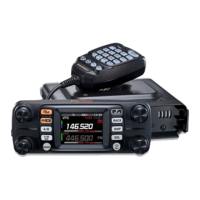

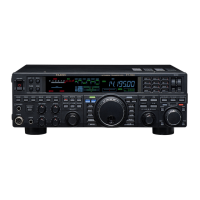
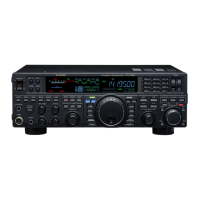
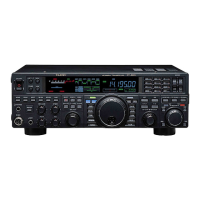
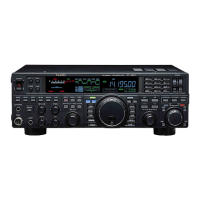
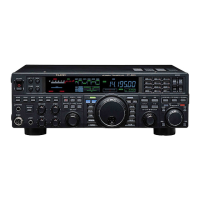
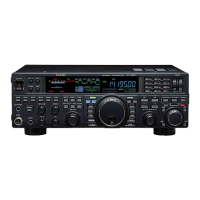
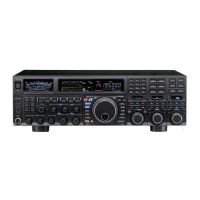


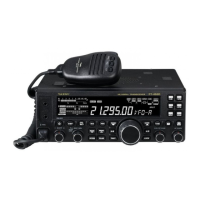
